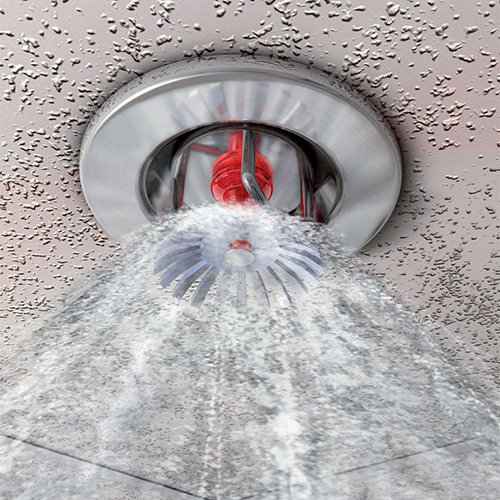Complete Guide
Fire safety is a key aspect of planning for any building, whether residential or commercial. Depending on the type of building, different fire protection systems are used, among which fire protection sprinkler systems play a significant role. Often invisible in everyday life, these systems are extremely important in an emergency, providing an effective and rapid response to a fire. In this guide, we will look at how these extremely important systems work.
Basics of Fire Sprinkler Systems
Fire protection sprinkler systems are automatic fire extinguishing systems that use water as the extinguishing medium. Their main purpose is to control the spread of fire and minimize damage until the fire department arrives. Unlike alarm systems, which only signal the occurrence of a fire, sprinkler systems actively work to limit its spread.
There are several types of sprinkler systems, including wet, dry, foam, and gas sprinklers. The choice of system depends on the specifics of the building, the type of materials stored inside, and the climatic conditions in which the building is located.
How Fire Sprinkler Systems Work
Fire sprinkler systems are activated by high temperatures, usually resulting from fire. Temperature sensors are located in the sprinkler heads that respond to the increase in heat. When a certain temperature is exceeded, the sensor activates the sprinkler, which begins to spray water on the area where the threat has been detected.
Some systems can also use smoke detectors, which can detect fires at a very early stage, before the temperature rises to a level that activates sprinklers. This allows for even quicker intervention and increases the chances of limiting the spread of fire.

Fire Sprinkler System Components
The basic components of a fire sprinkler system are sprinkler heads, water supply pipes, valves, pumps, and water tanks. Each of these components is critical to the proper operation of the system and must be properly designed and installed for the system to operate effectively.
Sprinkler heads are devices that detect fire and spray water. They come in a variety of types and can be customized to suit a given building. Pipes and valves are responsible for delivering water to the sprinklers, while pumps and tanks provide the pressure and water supply needed to effectively extinguish a fire.
Installation and maintenance of fire sprinkler systems
Installing fire sprinkler systems is a complex process that should be performed by professionals. It requires precise design, understanding the specifics of the building, and consideration of all fire protection regulations and standards. Each element of the system must be properly installed and configured to provide optimal protection.
Maintenance and regular inspection of sprinkler systems are just as important as their proper installation. Maintenance includes things like checking the water pressure, checking the condition of sprinklers and sensors, and testing the system to ensure it is working properly. Regular inspection and maintenance help ensure that the system is working properly when you need it most.
Application of fire sprinkler systems
Fire sprinkler systems can be found in many types of buildings, from single-family homes, through office buildings, hotels, hospitals, to warehouses and industrial plants. Their effectiveness in extinguishing fires has been confirmed in many studies and case studies of real fires. These systems are not only effective, but also economical, because they can significantly reduce the damage caused by fire.
Summary and Conclusions
Fire sprinkler systems are effective tools in the fight against fires that can significantly minimize damage and save lives. Thanks to their automatic operation, these systems can respond to the threat of fire faster than humans, which is crucial for the effectiveness of firefighting operations. Properly designed and maintained sprinkler systems can significantly reduce the risk of fire, ensuring the safety of both buildings and their occupants.
